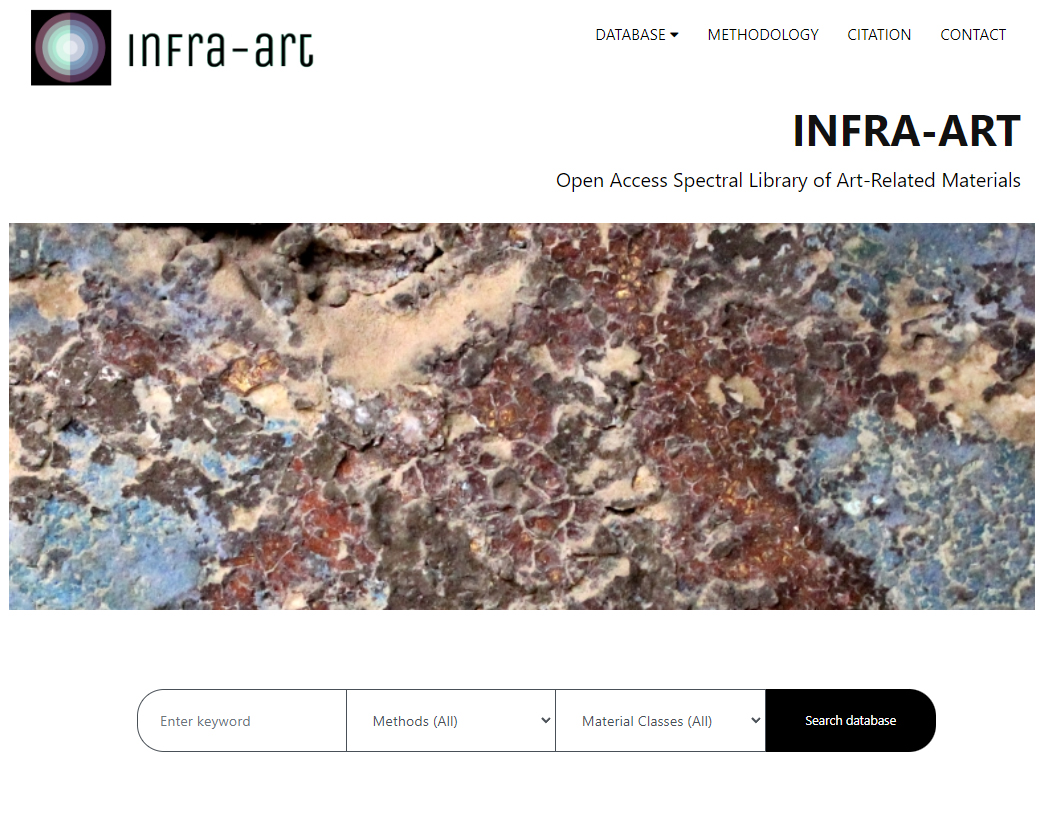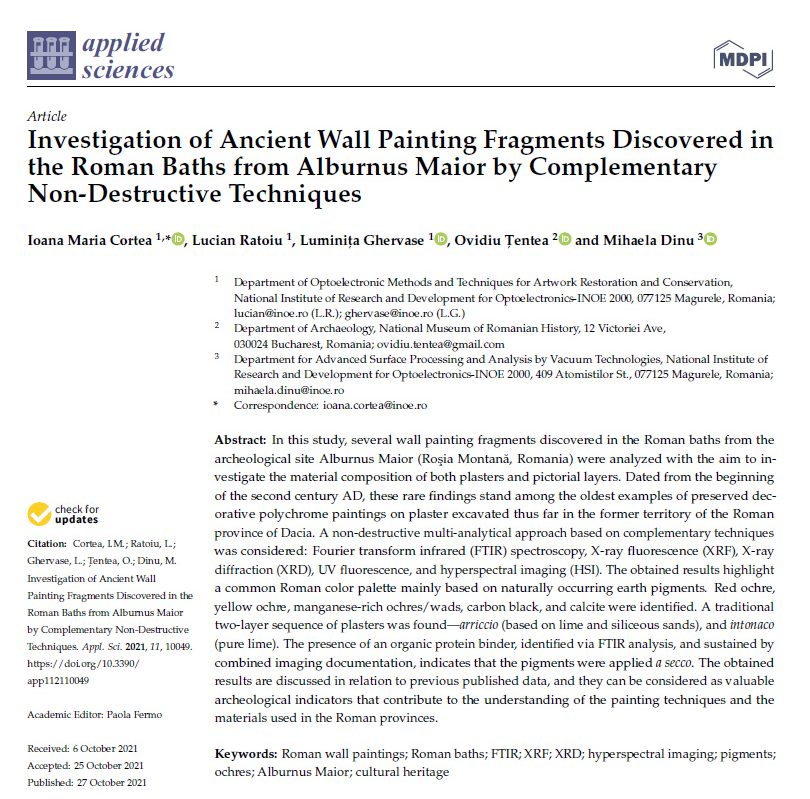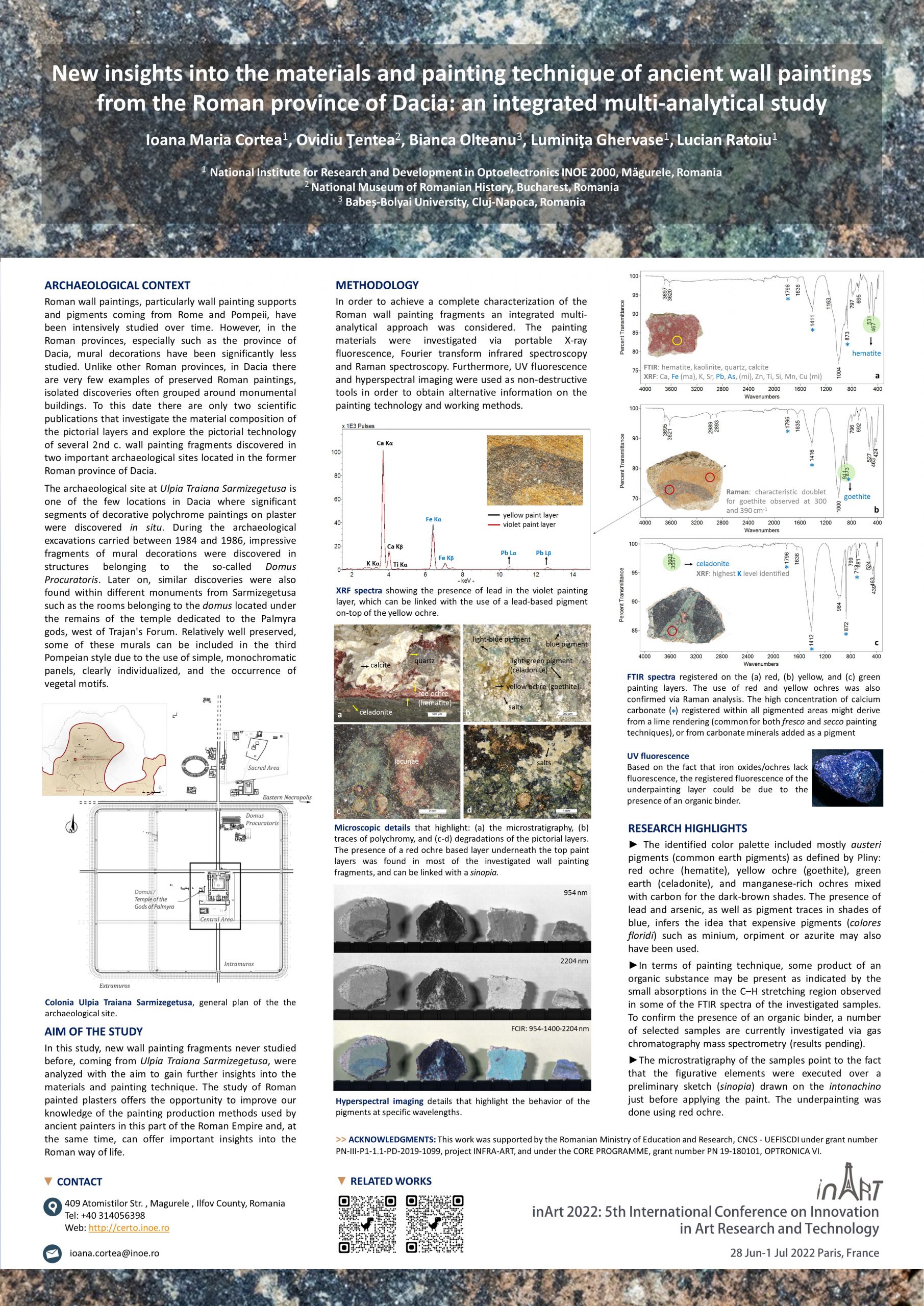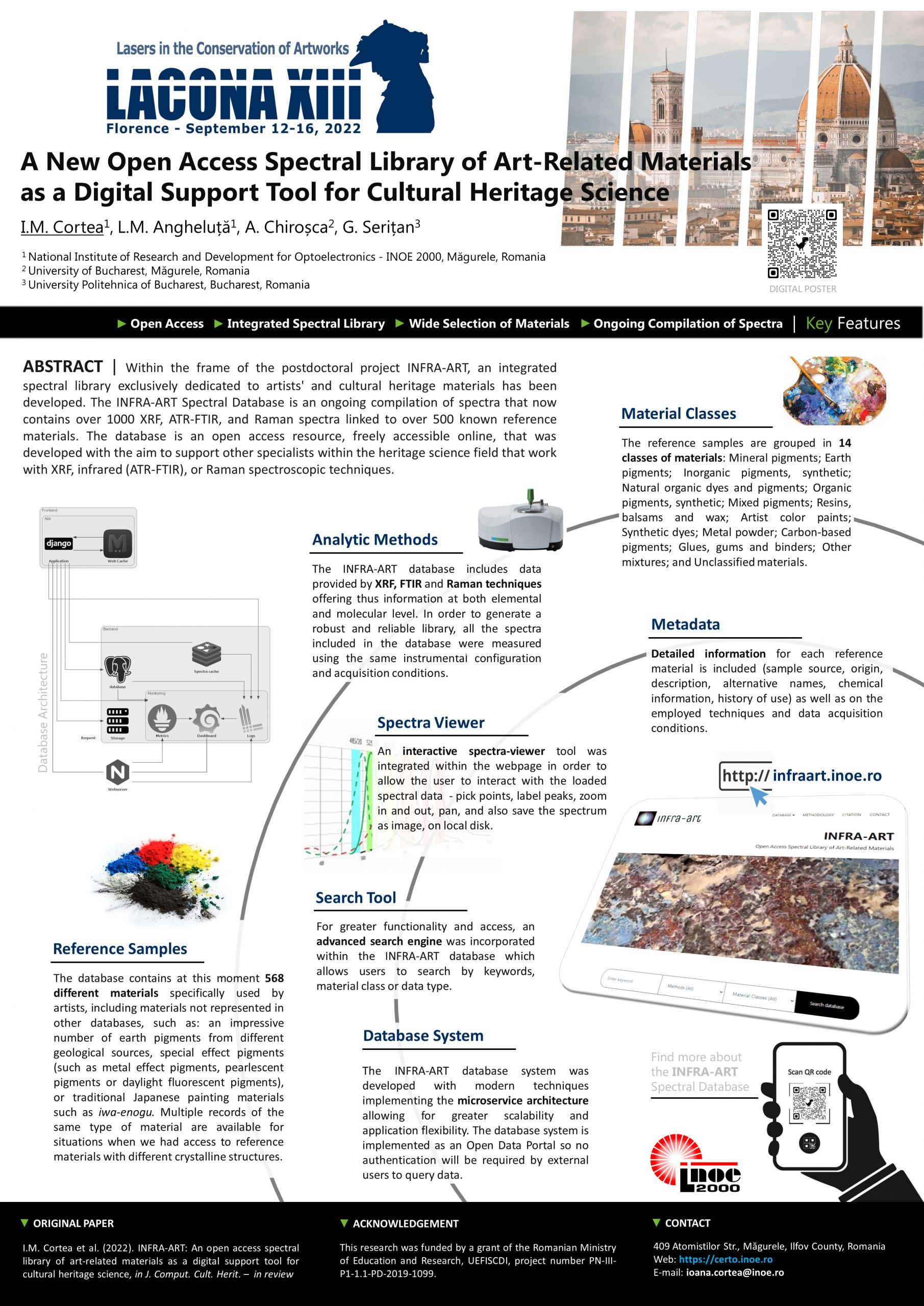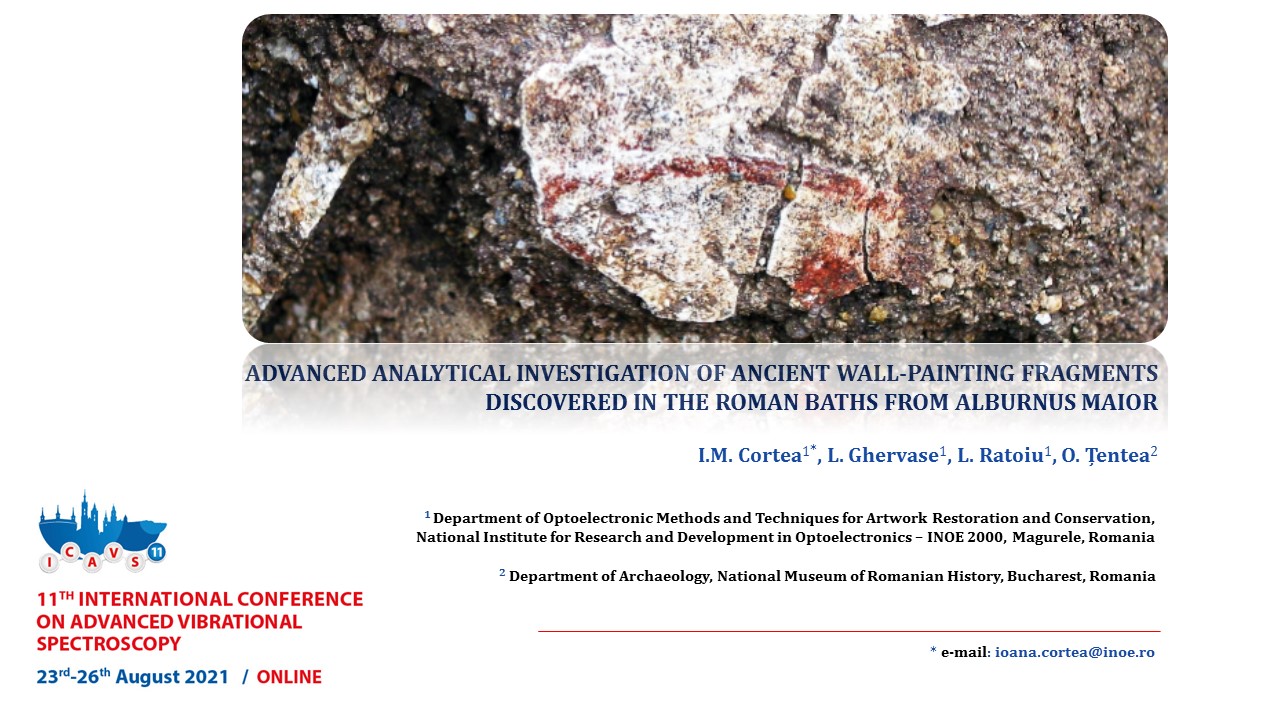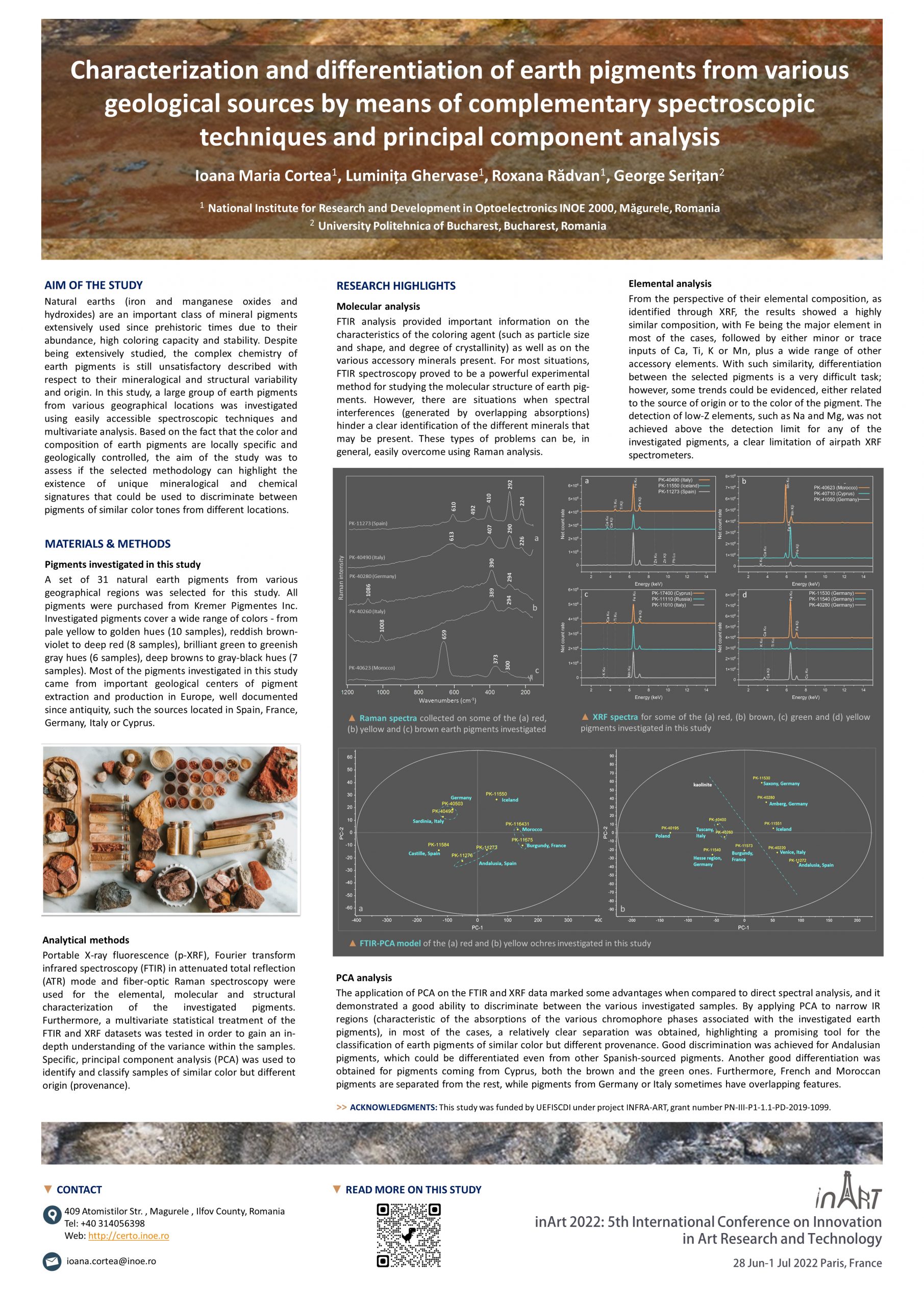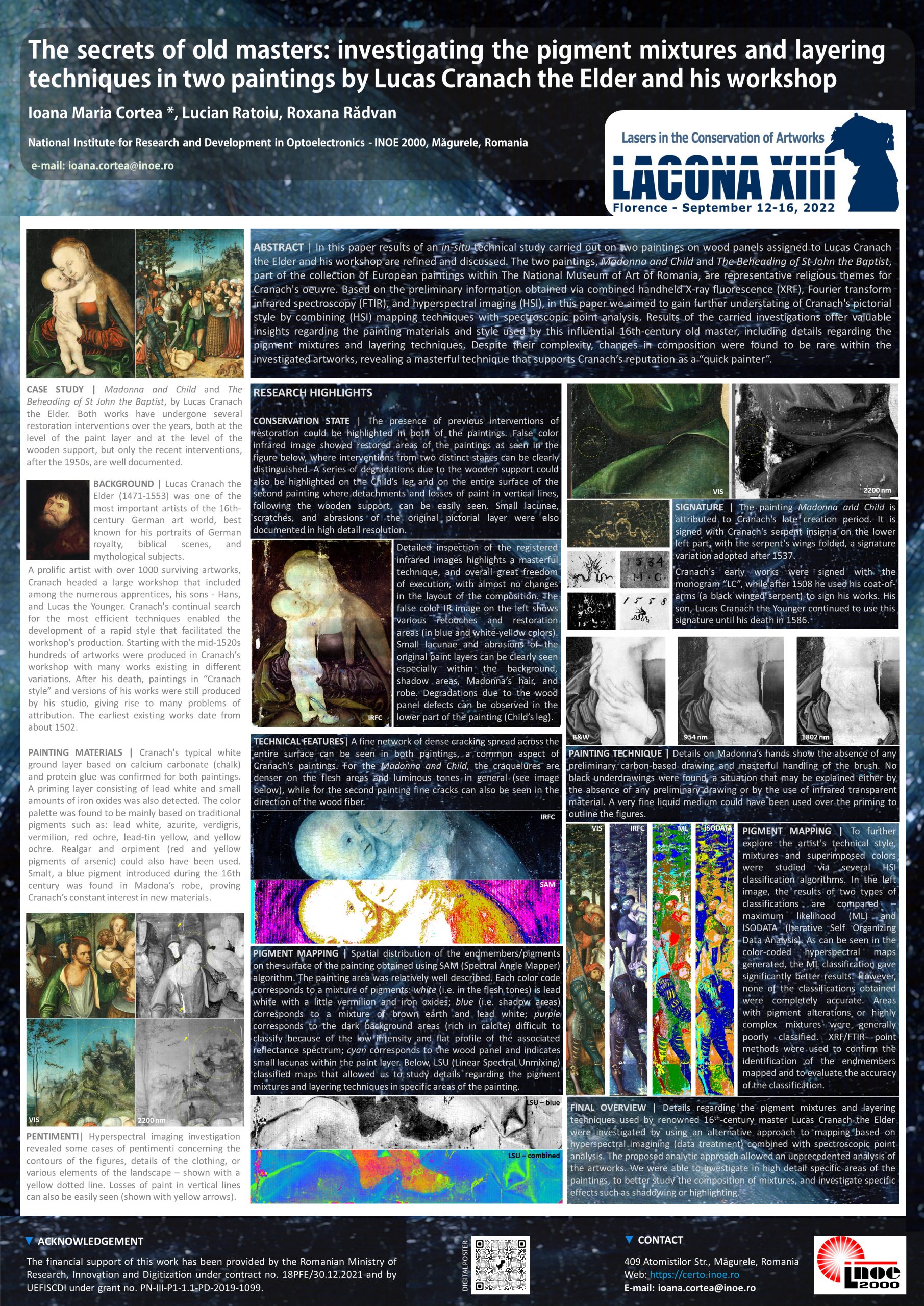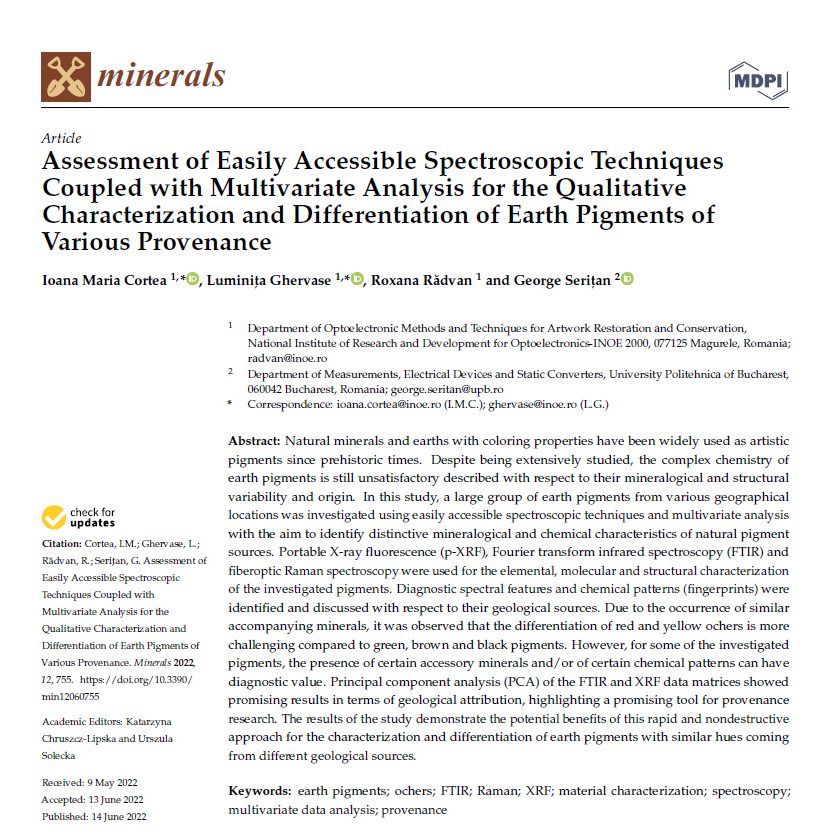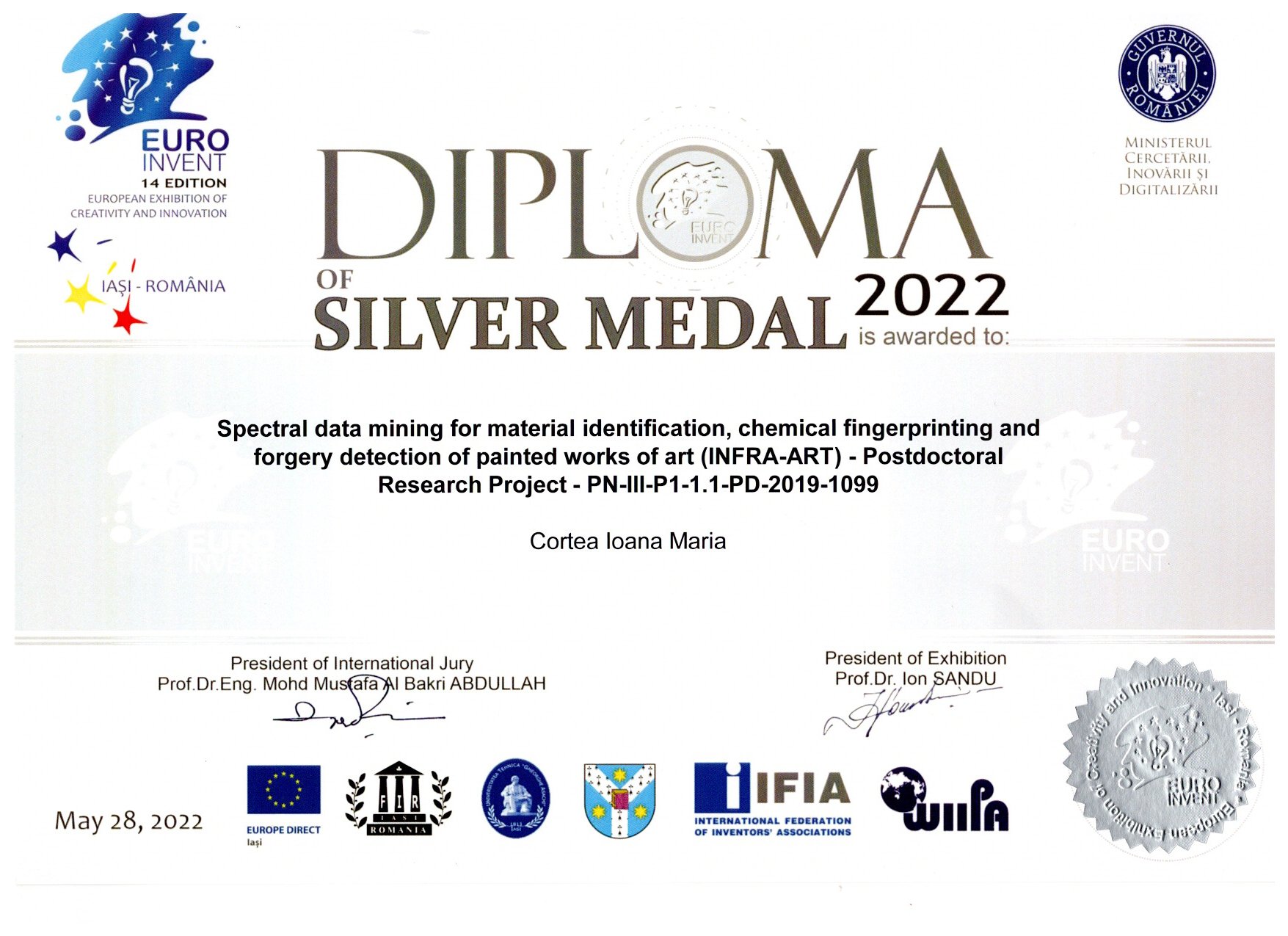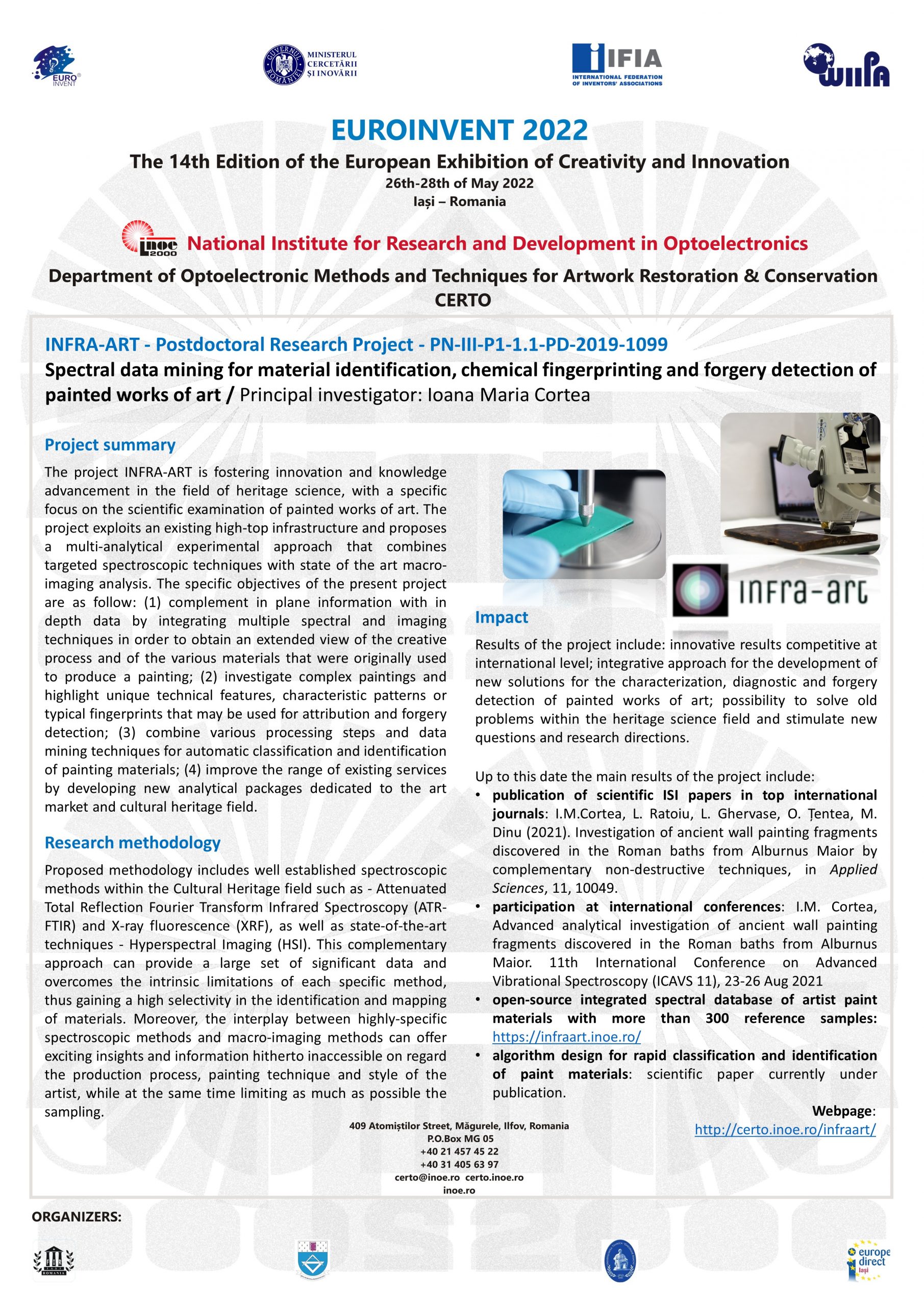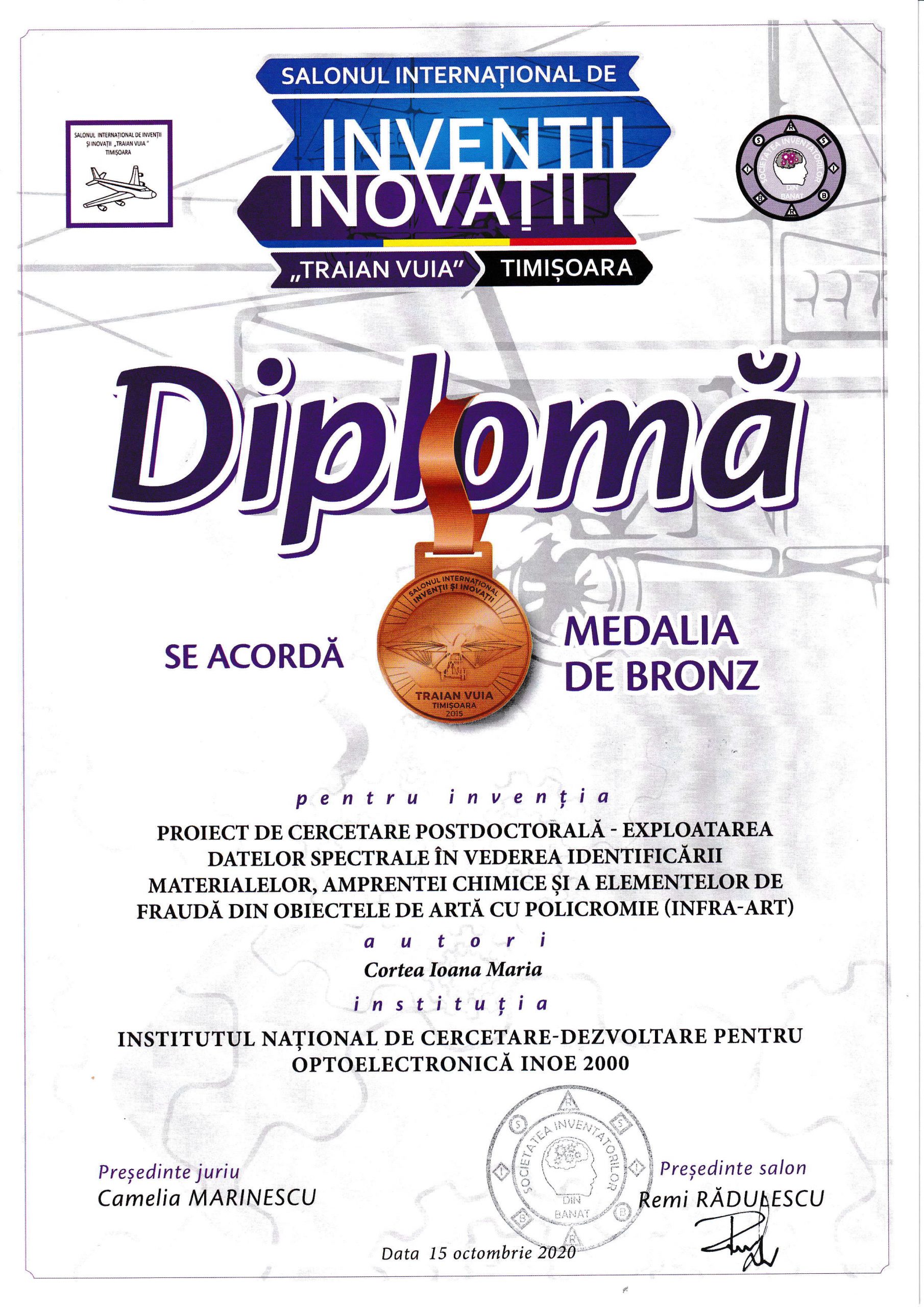FINAL SUMMARY REPORT
The main aim of the INFRA-ART postdoctoral research project (grant no. PN-III-P1-1.1-PD-2019-1099) was to foster innovation and knowledge advancement in the field of heritage science, with a specific focus on the scientific examination of painted works of art. A multi-analytical experimental approach that combines targeted spectroscopic techniques with state-of-the-art hyperspectral imaging, and multivariate analysis techniques, was used to obtain an extensive analytical package of data on both mock-up samples as well as on various artworks. Data mining techniques were employed to explore, analyze and extract in-depth information about spectral signatures, chemical fingerprints, or characteristic patterns that may be used for provenance studies, authentication, or for possible detection of forgery in art paintings.
Implemented starting with September 2019, the INFRA-ART project aimed to achieve 4 specific objectives: (1) Development of an integrated spectral library of artists’ and cultural heritage materials; (2) Workflow for material identification/discrimination (with a focus on historical pigments); (3) Algorithm design for automatic classification and identification of painting materials using multivariate analysis; (4) Development of integrated pigment-mapping techniques.
One of the main results obtained within the postdoctoral research project is the development, implementation and optimization of the INFRA-ART Spectral Library, an open access resource, available online (https://infraart.inoe.ro/), which was designed as a useful digital resource tool for researchers and other specialists in the field of heritage science, art history, conservation, and materials science that work with XRF, infrared (ATR-FTIR) or Raman spectroscopic techniques. The INFRA-ART spectral database is a constantly growing collection of spectra that now contains over 1000 XRF, ATR-FTIR and Raman spectra, linked to over 500 known reference materials.
Another important result of the research conducted during the three years of the project includes an in-depth study carried out on a large group of earth pigments, of various hues, from different geographical regions. The pigments were investigated by means of complementary spectroscopic techniques (FTIR, XRF, Raman) and principal component analysis, with the aim to identify distinctive mineralogical and chemical characteristics of natural pigment sources. The study demonstrates the value of using easily-accessible complementary spectroscopic techniques as a preliminary step for the characterization and differentiation of earth pigments and how chemometric analysis can inform and enhance the interpretation of spectral and chemical trends. Obtained results contribute to the knowledge and understanding of the complex chemistry of earth pigments, including of pigments never studied before. Moreover, the multivariate discrimination models proposed (Principal Component Analysis of the FTIR and XRF data matrices) showed promising results, highlighting a potential tool that could be used for provenance research, if further refined.
Important results were also obtained in terms of the materials and painting techniques used by various artists and masters, by investigating diverse archaeological artifacts (surviving examples of decorative polychrome painting on plaster from the former Roman province of Dacia) as well as a series of easel paintings. By integrating multiple spectral and imaging techniques, in-plane information as well and in-depth data could be obtained on the various materials that were originally used to produce the painting, allowing a better understanding of the creative process. Technical features (execution of the preparatory drawing), characteristic patterns (color palette, specific pigment mixtures) or typical fingerprints (chemical signature of the identified pigments) that may be used for attribution and forgery detection were also investigated. Pigment mapping was also carried on several painted areas of interest. Data obtained from hyperspectral measurements were subjected to statistical methods. Several classification algorithms were tested in order to obtain the spatial distribution of the endmembers/pigments. The colour-coded hyperspectral maps generated, complemented by spectral spot analysis, provided on overview of the distribution of pigments and allowed to better study the composition of mixtures, and to investigate specific effects such as shadowing or highlighting, or to investigate specific painting details with a high degree of precision.

Main deliverables obtained within the INFRA-ART project

Appendix

